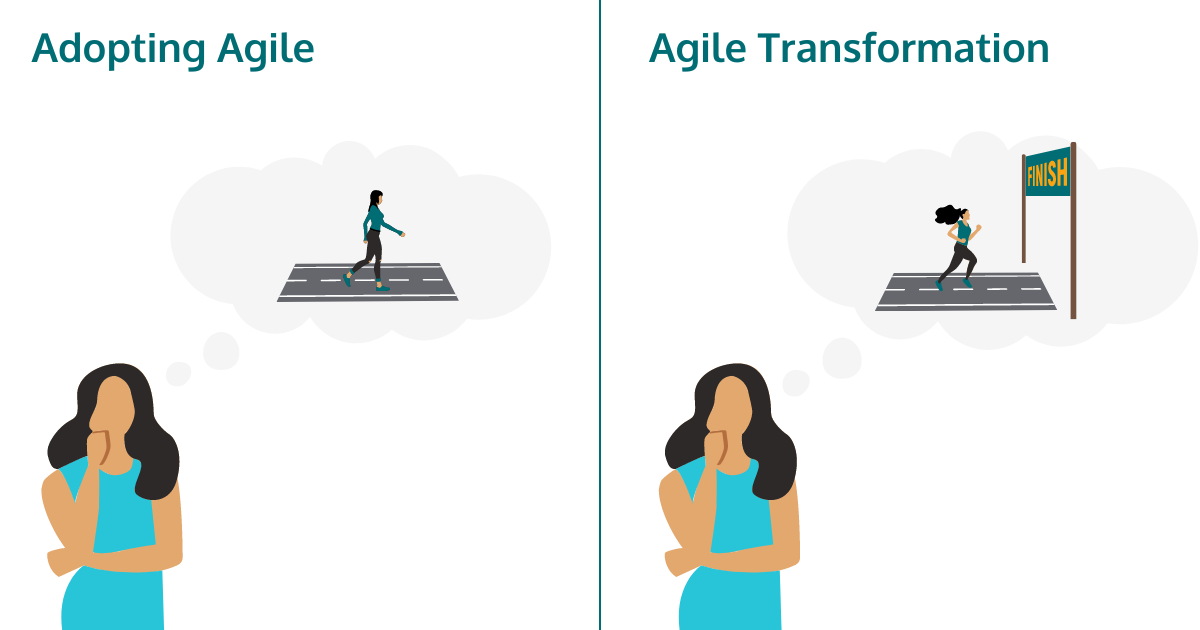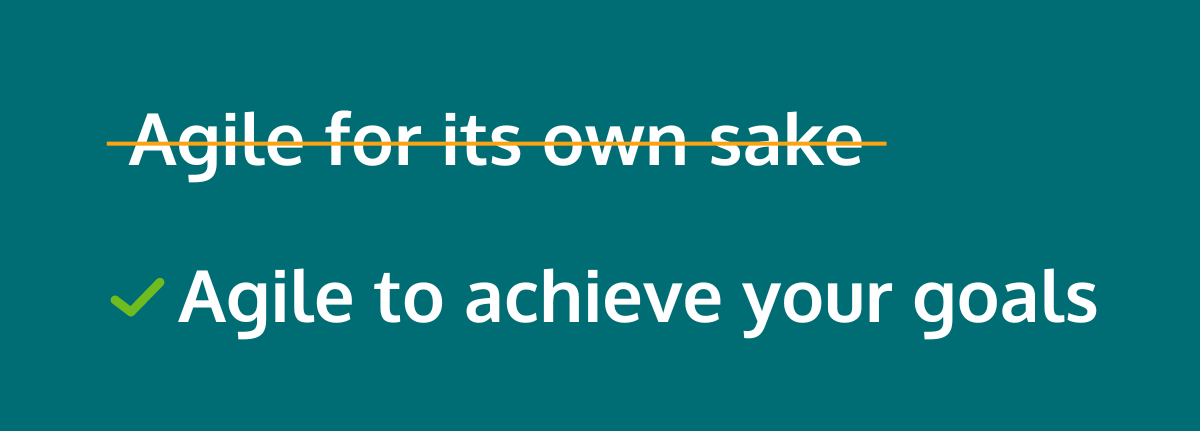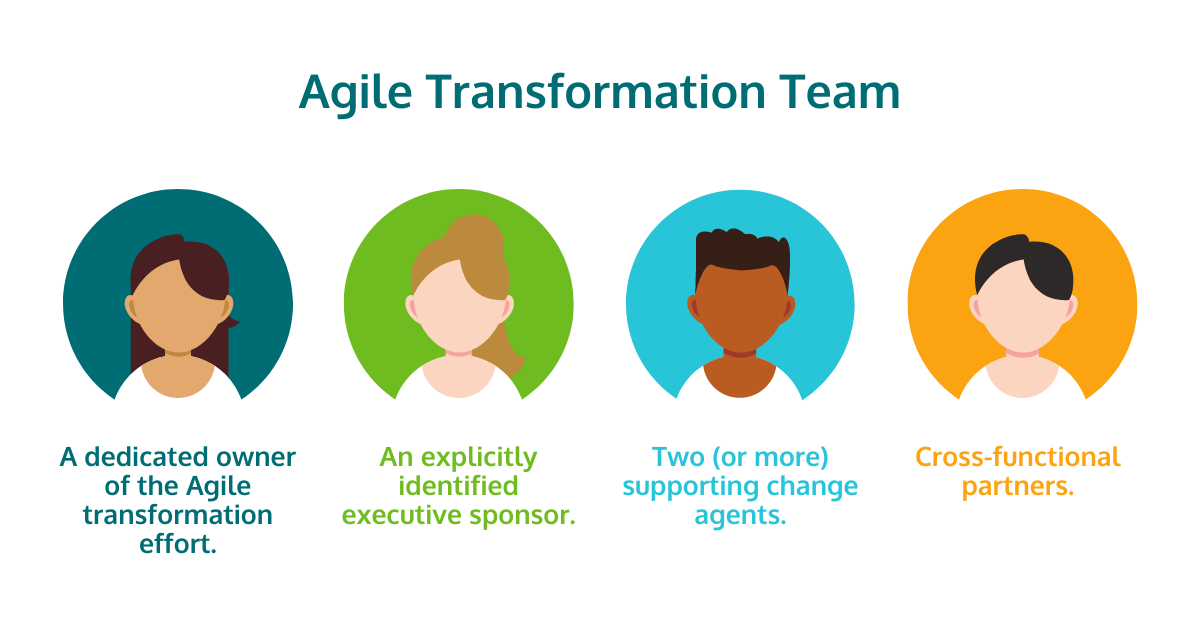-
- marketing agility
- Teams
- Organizations
- Education
- enterprise
- Articles
- Individuals
- Transformation
- Solution
- Leadership
- Getting Started
- business agility
- agile management
- going agile
- Frameworks
- agile mindset
- Agile Marketing Tools
- agile marketing journey
- organizational alignment
- Agile Marketers
- People
- Selection
- (Featured Posts)
- strategy
- agile journey
- Metrics and Data
- Kanban
- Resources
- Why Agile Marketing
- agile project management
- self-managing team
- Meetings
- Scrum
- agile adoption
- scaled agile marketing
- tactics
- scaled agile
- AI
- Agile Meetings
- agile marketing training
- agile takeaways
- Agile Leadership
- agile coach
- enterprise marketing agility
- Scrumban
- state of agile marketing
- team empowerment
- Intermediate
- agile marketing mindset
- agile marketing planning
- agile plan
- Individual
- Team
- Videos
- agile marketing
- kanban board
- Agile Marketing Terms
- agile transformation
- traditional marketing
- FAQ
- agile teams
- Agile Marketing Glossary
- CoE
- Scrumban
- agile
- agile marketer
- agile marketing case study
- agile marketing coaching
- agile marketing leaders
- agile marketing methodologies
- agile marketing metrics
- agile pilot
- agile sales
- agile team
- agile work breakdown
- cycle time
- employee satisfaction
- marketing value stream
- marketing-analytics
- remote teams
- sprints
- throughput
- work breakdown structure
- News
- agile brand
- agile marketing books
- agile marketing pilot
- agile marketing transformation
- agile review process
- agile team charter
- cost of delay
- hybrid framework
- pdca
- remote working
- scrum master
- stable agile teams
- stand ups
- startups
- team charter
- team morale
- user story
- value stream mapping
- visual workflow
Looking to Start an Agile Transformation? Ask Yourself These 5 Questions First

Agility is awesome. It brings us closer to the customer, improves employee engagement, increases productivity, and creates alignment with business objectives.
But adopting Agile ways of working within existing teams and organizational structures is very different from transforming to a fully Agile department or organization.
Adopting Agile is like committing to taking a 30-minute walk every day.
Transforming is like committing to completing a triathlon.

Both will make you healthier, but one takes a whole lot more time, effort, and money (and also has a much bigger impact on your fitness).
The triathlon equivalent of Agile is often called Agile transformation, and the process is lengthy, complex, and, like all transformational efforts, risky.
Of course, with its increased level of effort and risk comes correspondingly high levels of potential reward, which is why, every day, more organizations start a transformation initiative. Many of them wisely appoint a leader to drive this change. As one of our pharmaceutical company clients recently said, "It's hard work, but it's so worth it."
If you’re one of those people who’ve been tasked with making Agile happen, you may be feeling nervous (or nauseous or outright terrified). Transforming a department or organization of any size can be tough, but if you start off on the right foot, the whole journey will be easier.
So, here are five critical questions that every Agile change agent needs to get answered as quickly as possible. Arming yourself with this info lowers the risk associated with change and reduces the time it’ll take to start seeing an impact from your process improvement efforts.
What’s the Goal of This Agile Transformation?

Let’s start with a crucial statement: Agile should not be the reason you’re on a transformation journey.
Agile itself isn’t why you’ll train people, coach leaders to change their behavior, restructure your teams, buy a new set of tools, etc. Instead, you’re going to do all this to achieve some critical business goal (or goals), and only your organization can tell you what that is.
Some typical goals of an Agile transformation are:
- Increased alignment between strategic goals and daily execution, or, said another way, less random projects and more focused effort across teams.
- Faster speed to market for all kinds of work, from marketing campaigns to new product features to job postings.
- Better productivity and less waste within and among teams.
- Higher employee satisfaction and retention rates.
These are just a sampling of goals, but you can see why it’s critical to start with your “why.” If you’re trying to improve employee satisfaction and retention, you’ll go about the transformation effort in a completely different way than if productivity is your main goal.
You’re also going to measure progress, establish pilot teams, and draft a rollout plan – all differently depending on your goal set.
So before you do anything else, sit down with your key stakeholders and find out what they’re hoping Agile will do for them.
Warning: if you hear too much about efficiency, a transformation may not actually be what they want. The stakeholders may be confusing adoption and transformation: get this clear as fast as you can!
And remember, even Agile transformation itself should be an iterative process. The goals you start with probably won’t be the ones you’re focused on in a year, so don’t feel the need to try and improve everything immediately.
Set your sights on a few key outcomes, and get good at getting better. Then you can expand your continuous improvement efforts to other worthwhile goals.
How Will We Know if Our Agile Transformation Is Working?
The number of active Agile teams is a terrible success metric, but in the absence of other meaningful measurements, it’s often the default.
Just throwing together a bunch of Agile teams is going to create chaos, not more effective ways of working.
And, when you factor in the typical slowdown that all Agile teams experience in their early weeks while they’re forming and storming, you may end up doing more harm than good by focusing solely on the sheer number of teams you create.
Instead, look for leading indicators that are tied to your ultimate goal for the Agile transformation, and maximize for those.
For example, one pharmaceutical company I worked with knew their projects were getting bogged down in excessive rounds of reviews that were delaying their ability to get to market fast enough. So their main success metric was project completion time.
They had a baseline number from their pre-Agile transformation days and then compared the same number to how their Agile pilot teams were performing. Even after only a few sprints, they could see that completion time going down, so they were confident their model was working.
Only after they validated the effectiveness of their initial teams did they launch the rest, ensuring minimal chaos and maximizing impact on their main success metric. (Incidentally, their overall project cycle time eventually got cut in half thanks to Agile).
So once you’ve got the goal for the Agile transformation nailed down, agree on how you’ll know things are moving in that direction.
And, just as importantly, make sure you have the ability to measure that progress. A hypothetical metric that you can’t really track is just as bad as no metric at all.
Lastly, do your best to establish a pre-Agile baseline for your most critical metrics. While this isn’t a deal breaker if you can’t manage it, it’ll give you the best chance of ensuring all the transformation-related changes are actually making a difference.
Before diving into the cost of an Agile transformation, why don't you take a second to download our free Agile Marketing Transformation Checklist?
How Much Is the Agile Transformation Budget?
Agile transformation and Agile adoption aren’t the same thing. For one, they have very different budgets and commitments.
It’s reasonable to expect a single independent team to adopt Agile ways of working with some basic knowledge transfer (this could be certification-based workshops and/or self-paced learning) and a few months of coaching support.
But if you’re hoping to transform an entire department or a network of interdependent teams, you’re going to need far more support from experienced subject matter experts to have an impact.
This means you’ll need anywhere from two to five times the budget for a transformation than you’d need for straightforward, team-level adoption. You’ll need strategic consulting up front, change management support throughout the transformation journey, and coaching and training for teams and leaders.
And none of that includes internal time commitment. So you’re going to need at least one person managing the transformation as their full-time job, and ideally, they’ll be supported by a few others as well. These folks may not be doing the coaching, training, or communication strategies themselves, but they’ll be taking the external insights and applying them.
Nothing’s more frustrating than being asked to successfully transform a complex marketing department of hundreds of people, with one person working on it for five hours a week without any third-party support. Still, I’m sorry to say it happens.
If you’re being hit with these kinds of unrealistic expectations, see if you can descope down to simpler definitions of done (e.g., adoption instead of transformation as a first step). Piloting the right way by investing in just a couple of teams is far more effective than spreading a meager budget over dozens of teams and expecting it to make an impact.
It’s also helpful to tie budget questions to key goals or outcomes. For example, if you can prove that the transformation is making an impact, that might be the key to unlocking additional investment.
Ideally, you’ll soon be able to prove that your transformation work is paying for itself.
Who’s on the Agile Transformation Team?

Just as you need clarity about your budget, you need to know who’s in your corner supporting your efforts. This includes any full-time or part-time people who’ll become members of the transformation team, along with key executive sponsors and other internal Agile change agents.
For example, if you have a software or product development function that’s already using Agile, you may be able to tap into an existing Agile center of excellence for support in driving your own change.
Just beware of an overly prescriptive partner who’s not willing to let you build your own tailored approach to agility! We particularly see this in highly regulated industries like HLS where the need to control can go a bit overboard.
As with the budget question, this is the time to get explicit about what amount of time commitment you have to support transformation expectations. If you’re hoping to change team structures, strategic planning processes, budget cycles, and reporting lines as part of your transformation, but you have no support from executives and no partner in human resources, you’re going to have a long, hard climb ahead of you.
You’re going to want, at the very least:
- A dedicated owner of the Agile transformation effort. They don’t necessarily need extensive Agile experience themselves, but the less they have, the more they’ll need a budget to lean on third-party expertise. The best results come when someone can dedicate all, or at least most, of their time to guiding this effort; however, they can grow into this level of dedication over time as buy-in increases.
- An explicitly identified executive sponsor. This person will help socialize and drive change, as well as act as the remover of high-level impediments beyond the transformation owners’ span of control.
- Two (or more) supporting change agents. These folks need to be fully invested in the transformation, even if they’re not spending 40 hours a week on it. They can help schedule training and coaching sessions, distribute internal communications, socialize the impact of the transformation, track key performance indicators, and so on. While they can be part-time contributors, remember that the less time each person has to help, the more folks you’ll need. And in the best-case scenario, these supporters should also have some influence in the organization (or at least know how to harness influence).
- Cross-functional partners. At some point during a transformation, you’re going to be asking for significant changes in job descriptions, reporting lines, budgeting cycles, and so on. Start identifying the partners who can help you drive that change early and build the relationships you’ll need to get this done down the road.
Do We Have an Internal Communications Strategy?
Transformation is serious, and it can sometimes be scary for those it impacts. However, having a clear plan of communication helps smooth out bumps in the road, and works to grease the wheels of change.
Some transformation leaders are fortunate to have an internal communications team they can lean on for support, but most need to develop their own comms plan. It’s important to understand what, if any, help is available to you as soon as possible because comms can be a time-consuming piece of the transformation effort.
Comms may seem like a “nice to have” that really isn’t that critical, but I’ve seen beautifully designed, carefully crafted transformation initiatives struggle to get momentum because they weren’t properly communicated.
And effective communication isn’t just about choosing the right cadences and channels. Leaders also need to employ empathy to understand what their teams may be thinking and feeling. Consider the impact of language, timing, and implications, and work hard to align rather than dictate whenever possible.
Transformation without communication is kind of like a high-performance sports car with cheap tires. It might move forward, but eventually, something’s going to blow up and slow you waaaay down.
Here are just a few needs that your comms strategy should be able to fill:
- Providing details about a rollout plan. Which teams will be going first, and why? What happens to those awaiting a change? What kind of training commitment is expected?
- Sharing progress early and often. Best-in-class transformations share weekly progress reports far and wide. These need to be carefully thought out, and the distribution list managed for this crucial communication to do its job.
- Preventing panic about restructuring and roles. Sometimes Agile gets equated with restructuring or headcount reductions, and getting out ahead of those fears with clear, consistent communication is vital.
- Arming sponsors and change agents with talking points. Executives can advocate for the transformation with their peers but will likely need guidance on how best to approach these conversations. A well-designed comms plan gives them the tools they need to go to work on your behalf.
Knowing the answers to these five critical questions won’t magically ensure a successful transformation, but it will save you from wasting time on a poorly understood effort. Whether you’re committing to Agile adoption – the daily 30-minute walk – or a full-blown transformation – competing in a triathlon – this information will start you on the right foot.
And remember, while the effort involved in adoption is less than that needed for transformation, both are preferable to settling for the status quo and hoping for better results.
Training for a triathlon requires not only challenging your body in three different sports but also making changes to your nutrition and sleep, as well as supplementing flexibility, strength work, and meditation.
This is deep, meaningful change.
And it can be uncomfortable.
Just like Agile transformation.
Both walking and triathlon training will make you healthier, but one takes more time, effort, and money, leading to a much more significant impact on your fitness and well-being.
With all that being said, don't forget to download our Agile Marketing Transformation checklist, before you take the next step.
Topics discussed

Andrea Fryrear is a co-founder of AgileSherpas and oversees training, coaching, and consulting efforts for enterprise Agile marketing transformations.
Improve your Marketing Ops every week
Subscribe to our blog to get insights sent directly to your inbox.


%20%5B1920x1080%5D.jpg?width=450&height=250&name=The%20Problem%20with%20Projects%20(and%20the%20Agile%20Solution)%20%5B1920x1080%5D.jpg)
